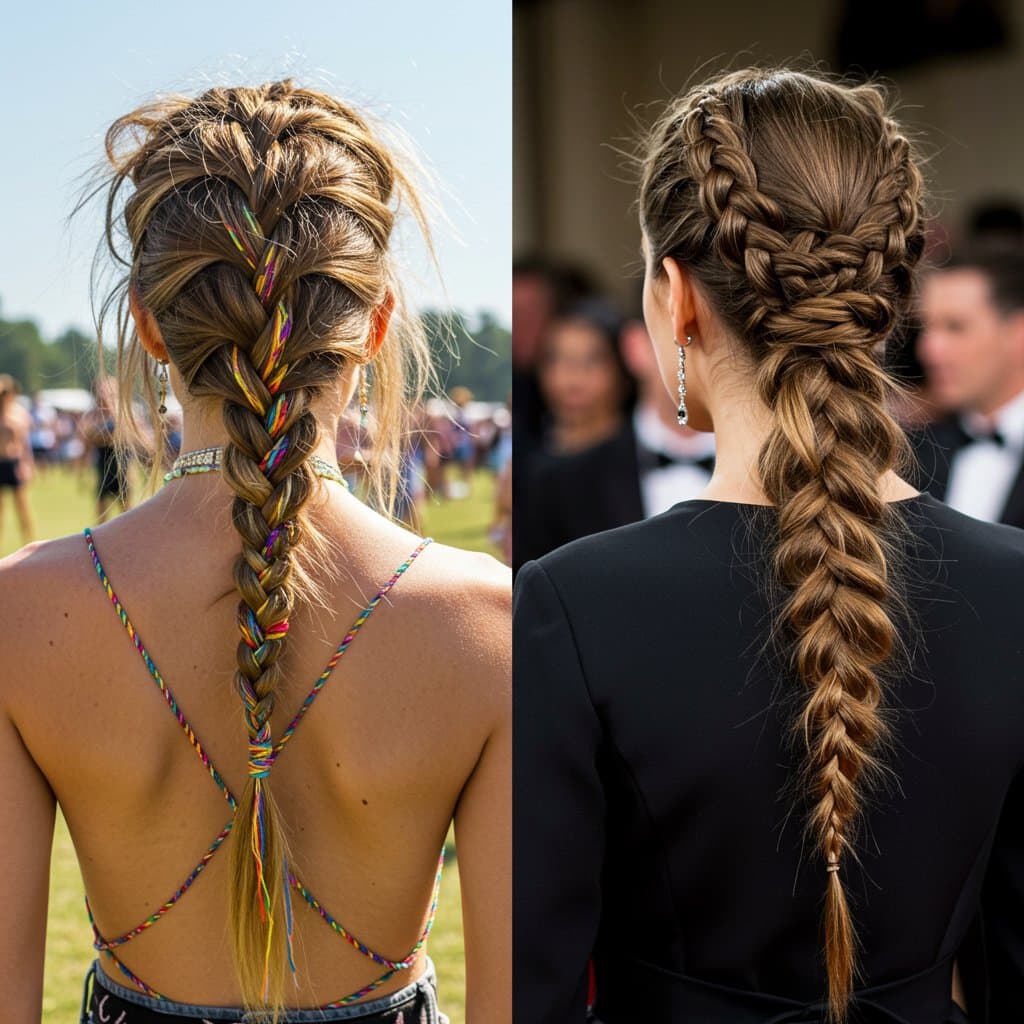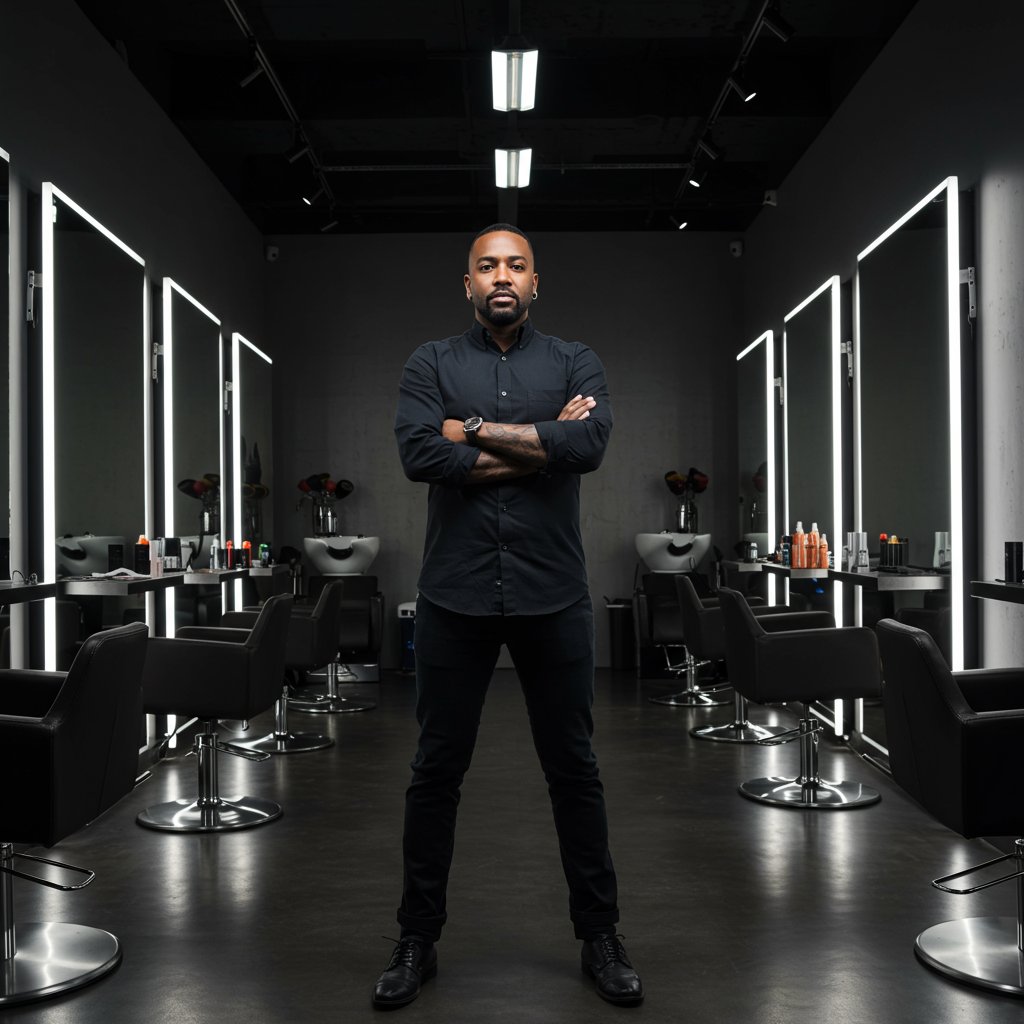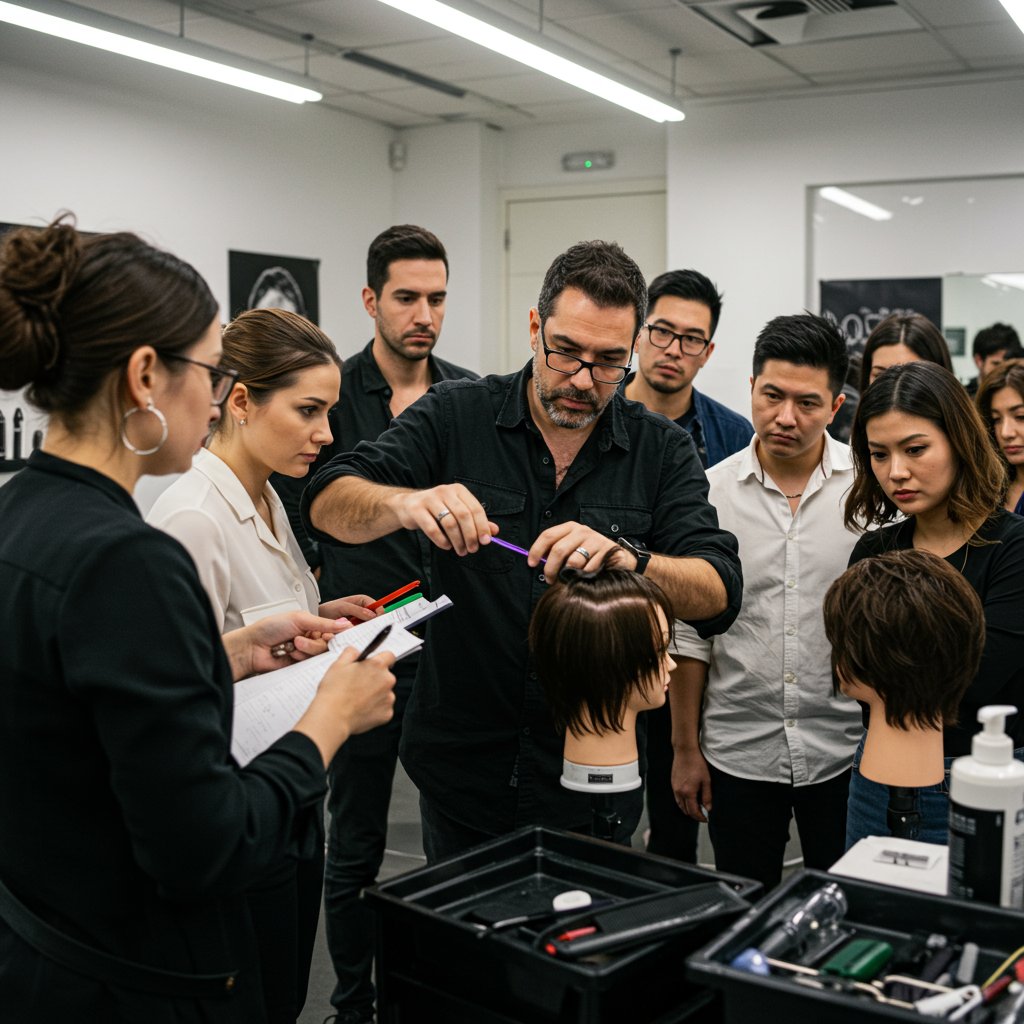
Predicting the Woman Hairstyles of the Future: 7 Trends Shaping the Next Decade | Tech & Sustainability
12 min read

12 min read

12 min read

14 min read
Download our app to instantly see how you'd look with any hairstyle or color
Get the App
13 min read

18 min read

12 min read
Download our app to instantly see how you'd look with any hairstyle or color
Get the AppThe world of hairstyling is a vibrant, ever-evolving landscape of artistry, science, and fashion. A cosmetology license is the key that opens the door, but it is by no means the final destination. For those dedicated to building a truly exceptional and enduring career, the journey of learning never ends. The importance of continuing education for hair professionals cannot be overstated; it is the fundamental pillar that supports growth, relevance, and mastery in a competitive industry. It's the difference between a stylist who simply does hair and a hair artist who transforms it. This commitment to ongoing learning allows stylists to move beyond basic competence into the realm of true expertise, ensuring they can meet the sophisticated demands of modern clients and stay ahead of the curve. Investing in education is a direct investment in your craft, your confidence, and your career's future, fueling passion and preventing professional stagnation.

In an industry driven by trends that can change with the seasons, from the subtle shifts in balayage techniques to the resurgence of classic cuts with a modern twist, staying current is non-negotiable. Continuing education provides the structured environment to learn, practice, and perfect these new skills under the guidance of seasoned experts. It’s about more than just watching tutorials online; it’s about hands-on application, understanding the nuanced theory behind a technique, and receiving personalized feedback. This dedication to craft is palpable to clients. They seek out professionals who are not only skilled but also knowledgeable and passionate about their work. When a stylist can confidently discuss and execute the latest trends, they build a reputation for excellence that translates into a loyal clientele, higher demand for their services, and ultimately, a more fulfilling and profitable career.
The beauty industry does not stand still. Each year brings a new wave of cutting techniques, coloring innovations, and styling aesthetics. Continuing education is the primary vehicle for stylists to stay on the pulse of these changes. Advanced classes delve deep into precision cutting, exploring everything from textured bobs and shags to advanced razor work that creates seamless, organic movement. In the world of color, the curriculum is constantly expanding. While balayage and ombré were once revolutionary, today’s education covers more nuanced techniques like foilyage, color melting, shadow rooting, and mastering vivid and pastel tones. These are not skills one can perfect from a single video; they require a deep understanding of placement, saturation, and processing that only formal training can provide.

Furthermore, staying on-trend is about more than just technical execution; it's about understanding the 'why' behind the trend. Educators provide context, explaining how a certain look is influenced by runway fashion, celebrity culture, or broader social movements. This knowledge empowers a stylist to adapt trends for individual clients, rather than applying a one-size-fits-all approach. A client doesn't just want a 'wolf cut'; they want a version of the wolf cut that suits their face shape, hair texture, and lifestyle. A stylist armed with advanced education can offer this level of personalization, elevating a simple service into a bespoke, confidence-boosting experience. This ability to interpret and customize trends is a hallmark of a true master of the craft.
A great hairstyle begins with healthy hair. A fundamental reason for pursuing continuing education is to gain a deeper, scientific understanding of the hair and scalp. Advanced courses move beyond basic cosmetology curriculum to explore trichology—the science of hair and scalp disorders. This knowledge enables stylists to identify common issues like product buildup, dryness, breakage, or scalp irritation and recommend effective, targeted treatments. Understanding the chemical composition of hair, the role of pH balance, and the structure of the hair cuticle allows a stylist to make more informed decisions during chemical services, minimizing damage and maximizing results. This scientific grounding transforms a stylist from a technician into a trusted hair health advisor.

This expertise directly links to mastering product knowledge. The professional market is saturated with high-performance products, each with unique ingredients and technologies. Continuing education, often offered by product brands themselves, provides an invaluable deep dive into these formulations. Stylists learn precisely which ingredients are best for fine, thinning hair versus thick, coarse hair, or how to use bonding treatments to protect hair during a lightening service. This expertise not only improves the quality of their work in the salon but also empowers them to prescribe the perfect at-home care regimen for their clients. Confident, educated recommendations lead to higher retail sales, which can significantly boost a stylist's income and reinforces their status as an expert.
The most technically skilled haircut or color can fall flat if it’s not what the client wanted. The consultation is arguably the most critical part of any salon service, and communication is a skill that can and should be continually refined. Advanced education workshops often focus specifically on the art of the consultation. They teach stylists active listening techniques, how to ask insightful questions that uncover a client's true desires and hair history, and how to interpret inspiration photos realistically. Learning to manage client expectations is a crucial aspect of this training. A skilled communicator can gently guide a client with dark, box-dyed hair away from an immediate platinum blonde, explaining the process, cost, and timeline required to achieve their goal safely, thereby building trust and preventing disappointment.

Moreover, communication training extends to handling difficult conversations and resolving client dissatisfaction gracefully. These skills are invaluable for client retention and reputation management. A stylist who can navigate these situations with professionalism and empathy turns a negative experience into an opportunity to strengthen the client relationship. Education can also cover modern communication tools, such as using digital lookbooks, hair simulation apps, or even crafting professional email and text message reminders. By honing these 'soft skills,' stylists create a superior client experience from start to finish. Clients return not just for the beautiful hair, but for the feeling of being heard, understood, and cared for by a true professional.
There is a tangible aura of confidence that surrounds a highly educated and skilled hair professional, and clients can sense it. This confidence isn't arrogance; it's the quiet assurance that comes from knowing your craft inside and out. Continuing education is a direct path to building this self-assurance. When a stylist has invested time and resources into learning a new technique, they are more eager and prepared to offer it to their clients. They can explain the process and benefits with clarity and passion, which in turn inspires trust and excitement in the client. This confidence eliminates hesitation and empowers the stylist to recommend new ideas and push creative boundaries, leading to more innovative and satisfying results.

The credibility gained from ongoing training extends beyond the salon chair. Certifications from advanced academies or renowned educators serve as powerful credentials. Displaying these certificates in the salon or highlighting them on a professional social media profile signals a commitment to excellence. It tells potential clients that this is a professional who is serious about their career and dedicated to providing the highest level of service. This authority can lead to opportunities outside the salon, such as becoming an educator, working on photoshoots, or becoming a brand ambassador. Ultimately, the investment in education pays dividends in the form of a stellar reputation, which is the most valuable asset a stylist can possess.
Exceptional technical skill is only one half of the equation for a successful career in the hair industry. The other half is business acumen. Many talented stylists struggle not because of a lack of artistry, but because they lack an understanding of fundamental business principles. Continuing education now frequently includes courses on salon management, marketing, and personal finance tailored specifically for beauty professionals. These programs teach essential skills like how to price services profitably, manage inventory effectively, and understand key performance indicators (KPIs) like client retention rates and average service tickets. This knowledge is crucial for stylists who dream of one day owning their own salon or managing a team.

In the digital age, marketing is another critical skill. Social media platforms like Instagram and TikTok are powerful tools for attracting new clients, but they require a strategic approach. Marketing-focused workshops teach stylists how to build a professional brand online, take high-quality photos and videos of their work, write compelling captions, use relevant hashtags, and engage with their audience effectively. They also cover the importance of building an email list and the basics of online booking systems. By developing these business and marketing skills, stylists can take control of their career trajectory, build their clientele strategically, and maximize their earning potential, transforming their passion into a thriving and sustainable business.
The beauty industry is vast, and trying to be a master of all trades can sometimes lead to being a master of none. Continuing education offers a clear pathway for stylists to specialize in a particular niche, allowing them to become the go-to expert in their community for a specific service. This could mean dedicating oneself to the art of curly hair, learning various cutting techniques like the DevaCut or RezoCut, and understanding the unique needs of textured hair. Another popular specialization is hair extensions, which requires certified training in various methods like tape-ins, keratin bonds, or hand-tied wefts to ensure safe application and beautiful, natural-looking results.

Other potential niches include non-surgical hair replacement, complex color corrections, or becoming an expert in a specific brand's color line. By specializing, a stylist can differentiate themselves from the competition and attract a dedicated, high-value clientele willing to pay a premium for their expertise. This targeted approach not only makes marketing efforts more effective but also deepens the stylist's passion and skill in their chosen area. Specialization transforms a general practice into a destination service, creating a powerful personal brand and a more secure and focused career path.
Beyond the creative and business aspects, a core responsibility of any hair professional is to ensure the health and safety of their clients and themselves. State board regulations, sanitation protocols, and chemical safety standards are not static; they are updated as new information and technologies become available. Continuing education courses are essential for staying current with these critical requirements. This includes learning about the latest hospital-grade disinfectants, proper tool sanitation procedures to prevent the spread of infections, and understanding new OSHA guidelines for ventilation when working with chemicals.

Furthermore, as new chemical treatments and products are introduced to the market, it's vital to receive formal training on their safe application. This includes understanding potential allergic reactions, conducting proper patch tests, and knowing how to handle chemical spills or accidental exposure. This commitment to health and safety is a non-negotiable aspect of professionalism. It protects the public, protects the stylist from liability, and upholds the integrity of the entire industry. Regular refreshers on these topics ensure that the salon environment remains a safe and trusted space for everyone.
Ready to invest in your career? Here are some actionable tips for finding and making the most of continuing education opportunities:


In the dynamic world of professional hair styling, stagnation is the greatest threat to a successful career. The importance of continuing education for hair professionals is the ultimate antidote, serving as a constant source of inspiration, skill refinement, and professional growth. It is the commitment that separates the good from the great, empowering stylists to build unshakable confidence, cultivate deep client trust, and adapt to an ever-changing industry landscape. By embracing the role of a lifelong student, you are not just learning new ways to cut or color hair; you are investing in your artistry, your business, and your future. The time, effort, and resources dedicated to education will always pay the highest dividends: a career that is not only profitable and sustainable but also creatively fulfilling and endlessly exciting.
Download our app to instantly see how you'd look with any hairstyle or color
Get the App
12 min read

12 min read

14 min read